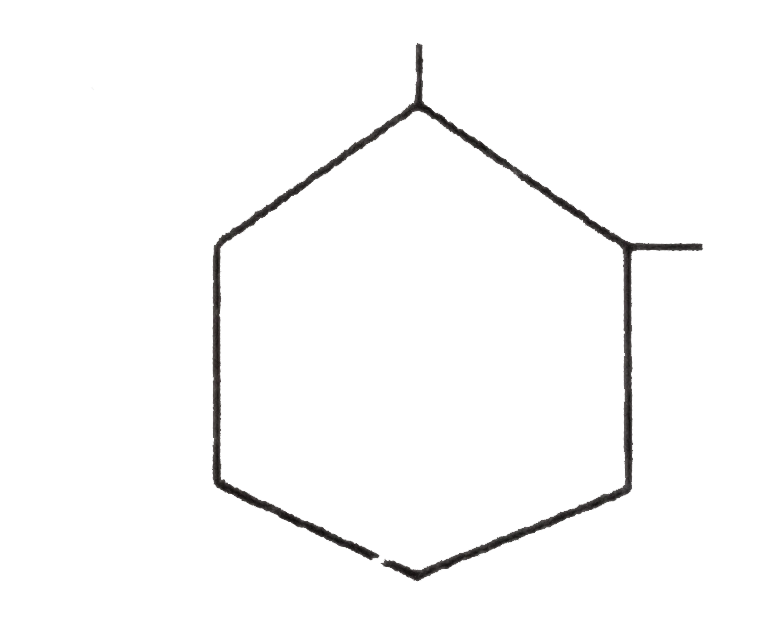Two moles of organic compound 'A' on treatment with a strong base gives two compound 'B' and 'C'. Compound 'B' on dehydrogenation with Cu gives 'A' while acidification of 'C' yields carboxylic acid 'D' with molecular formula of CH2O2 . Identify the compounds A, B, C and D and write all chemical reactions involved.
Since the molecular formula of D is CH2O2 , thus, D is HCOOH (formic acid). D is obtained by the acidification of C, so, C is sodium formate (HCOONa). Thus, A must be formaldehyde (as it undergoes Cannizzaro reaction with a strong base).

Thus, A = Formaldehyde (HCHO)
B = Methanol (CH3OH)
C = Sodium formate (HCOONa)
D = Formic acid (HCOOH)
Topper's Solved these Questions
- ALDEHYDES, KETONES AND CARBOXYLIC ACIDS BOOK - MTG GUIDECHAPTER - ALDEHYDES, KETONES AND CARBOXYLIC ACIDS EXERCISE - NEET CAFE (STRUCTURE AND NOMENCLATURE OF ALDEHYDES AND KETONES )
4 Videos
- ALDEHYDES, KETONES AND CARBOXYLIC ACIDS BOOK - MTG GUIDECHAPTER - ALDEHYDES, KETONES AND CARBOXYLIC ACIDS EXERCISE - NEET CAFE (PREPARATION OF ALDEHYDES AND KETONES)
16 Videos
- ALCOHOLS, PHENOLS AND ETHERSBOOK - MTG GUIDECHAPTER - ALCOHOLS, PHENOLS AND ETHERSEXERCISE - AIPMT/NEET
21 Videos
- BIOMOLECULESBOOK - MTG GUIDECHAPTER - BIOMOLECULESEXERCISE - AIPMT/NEET (MCQS)
19 Videos
Similar Questions
Two moles of organic compounds 'A' on treatment with a strong base gives two compounds 'B' and 'C'. Compound 'B' on dehydrogention with Cu gives 'A' while acidification of 'C' yields carboxylic and 'D' with molecular formula of CH2O2. Identify the compound A, B, C, and D.
View Solution(a) Two moles of organic compounds 'A' on treatment with a strong base gives two compounds 'B' and 'C'. Compound 'B' on dehydrogention with Cu gives 'A' while acidification of 'C' yields carboxylic and 'D' with molecular formula of CH2O2. Identify the compound A, B, C, and D and write all chemical reactions involved.
(b) (i) o-nitrophenol has lower b.p. than p-nitrophenol. Explain.
(ii) Write IUPAC name of the following :

View Solution
Knowledge Check
An organic compound A is a constituent of antifreeze and has the molecular formula C2H6O. Upon reaction with alkaline KMnO4, the compound A is oxidised to another compound B with formula C2H6O2. Identify the compounds A and B.
Abenzene, butanoneBEthanol, Ethanoic acidCethanoic acid, pentanoneDbutanal, methaneAn organic compound A of molecular formula C2H4, on reduction gives another compound B of molecular formula C2H6 .B on reaction with chlorine in the presence of sunlight gives C of molecular formula C2H5CI .
The compounds A, B and Care:AA: ethene B: ethane C: chloroethaneBA: ethane B: ethyne C: chloromethaneCA: ethyne B: ethane C: chloroethaneDA: ethene B: ethyne C: chloroethane
Two moles of organic compound 'A' on treatment with a strong base gives two compounds B and C. Compound 'B' on dehydrogenation with Cu gives 'A' while acidification of 'C yields carboxylic acid 'D' having molecular formula of CH2O2. Identify the compounds A, B, C and D.
View SolutionAn aromatic compound 'A' (Molecular formula C8H8O)) gives positive 2, 4-DNP test. It gives a yellow precipitate of compound 'B' on treatment with iodine and sodium hydroxide solution. Compound 'A' does not give Tollen's or Fehling's test. On drastic oxidation with potassium permanganate, it forms a carboxylic acid 'C' (Molecular formula C7H6O2), which is also formed along with the yellow compound in the above reaction. Identify A, B and C and write all the reactions involved.
View SolutionAn aromatic compound 'A' (Molecular formula C8H8O) gives positive 2, 4-DNP test. It gives a yellow precipitate of compound 'B' on treatment with iodine and sodium hydroxide solution. Compound 'A' does not give Tollen's or Fehling's test. On drastic oxidation with potassium permanganate it forms a carboxylic acid 'C (Molecular formula C7H6O2), which is also formed along with the yellow compound in the above reaction. Identify A, B and C and write all the reactions involved.
View SolutionAn aromatic compound 'A' (molecular formula C8H8O) gives positive 2, 4-DNP test. It gives a yellow precipitate of compound 'B' on treatment with iodine and sodium hydroxide solution. Compound 'A' does not give Tollen's or Fehling's test. On drastic oxidation with potassium permaganate it forms a carboxylic acid 'C' (molecular formula C7H6O2), which is also formed alongwith the yellow compound in the above reaction. Identify A, B and C and write all the reactions involved.
View SolutionAn aromatic compound 'A' (molecular formula C8H8O) gives positive 2, 4-DNP test. It gives a yellow precipitate of compound 'B' on treatment with iodine and sodium hydroxide solution. Compound 'A' does not give Tollen's or Fehling's test. On drastic oxidation with potassium permaganate it forms a carboxylic acid 'C' (molecular formula C7H6O2), which is also formed alongwith the yellow compound in the above reaction. Identify A, B and C and write all the reactions involved.
View SolutionAn aromatic compound 'A' (molecular formula C8H8O) gives positive 2, 4-DNP test. It gives a yellow precipitate of compound 'B' on treatment with iodine and sodium hydroxide solution. Compound 'A' does not give Tollen's or Fehling's test. On drastic oxidation with potassium permaganate it forms a carboxylic acid 'C' (molecular formula C7H6O2), which is also formed alongwith the yellow compound in the above reaction. Identify A, B and C and write all the reactions involved.
View Solution
